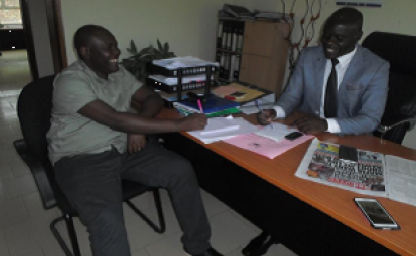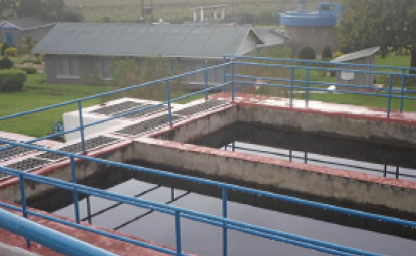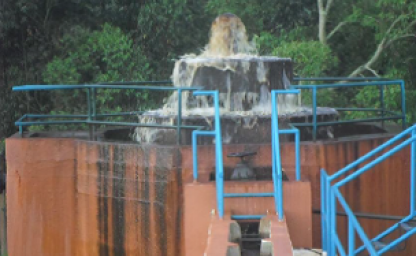Blog: A tale of infrastructure development on utilities’ viability and Service delivery
Author: Maxi Julius Omuut
After one year and seven days (to be exact!) in the Netherlands away from my beloved family, I was privileged to return to my motherland Uganda, the “pearl of Africa”. I came home to conduct field research to complete my graduate studies at IHE-Delft, and as I had hoped I have not missed any opportunity to combine the intensive experience of collecting data for my research, with that of meeting with friends and family.
The aim of my study is to critically analyse the extent to which infrastructure development affects financial sustainability and service delivery in the small towns of Uganda. I specifically want to understand the compromises and negotiations utilities in small towns undertake in striving for financial sustainability while improving access and reliability. I aim at being able to provide a detailed account of what deficiencies, surpluses and critical points take place in small towns and how these are dealt in the relationship between the local system and management, and the central head office in Kampala.
National Water and Sewerage Corporation (NWSC) has recently seen its mandate increased to improve coverage in the entire country besides the big cities it currently already serves. This has posed a challenge to the management of NWSC. Prior to moving to the Netherlands I was the manager of one of these small systems areas myself and I felt the pressure of making ends meet. My research focuses in the small towns of Bushenyi/Ishaka and Kitgum municipalities as these are some of the towns that were transferred by the Government of Uganda to NWSC.
Off I head to Bushenyi District! Located in the south western part of the country. I started my travel with two other fellow students from IHE, “Ram and Beverly”. They were on the same mission of research, but different themes. With them being foreigners in the country, I was glad to be helpful in giving survival tips and guidance on how to go about with life in Uganda. Although I must admit despite of being “son of the soil” it was also my first time to visit Bushenyi municipality at large and NWSC office in particular. Therefore we were three strangers in a new place which spiced up our research as we were all meeting new people with different cultures for the first time, eating “matooke” (mingled bananas) as the staple food, while enjoying the nice typical tropical weather of the region. We were warmly welcomed and made feel at home by NWSC Bushenyi/Ishaka staff.
So far, from my visit to Bushenyi I have already heard how indeed the scale of operations in small towns, due to their small size and population distribution affects the operational and investment costs. Bushenyi relies on water abstracted from the Nyaruzinga wetland (swamp). The swamp is only recharged by rainfall and during the dry season when the swamp dries up there is hardly any water to be pumped and supplied. Technically, the treatment plant would be able to produce enough drinking water for current and future demand if it were not for the raw water shortages. According to the Area Manager, the “Nyaruzinga plant would have the capacity to sustain water service delivery and adequately meet demand projected to increase to 3000mᶟ/day in the next 5 years if it was not drying up during dry spells”. During the dry season production drops as low as 500mᶟ/day which translates into high productions costs for the branch. During the dry season more chemicals are required to treat muddy water and the electricity costs are relatively higher as there is the same pumping, but to very few customers. In this kind of situation the utility is unable to independently generate sufficient revenues to meet its investment costs for expansion of services. In addition, the insufficient production during dry spells creates hesitation with Bushenyi Branch’s management as they would risk to increase the creation of dry zones (area with dry pipe networks). This is accentuated in small towns, as many more kilometres of pipe are required to reach all corners of the town and not all infrastructure is as intensively used (fewer connections per kilometre pipe). In ‘normal’ conditions NWSC Bushenyi has been able to meet the operation expenditures to a great extent. However, then operational costs abnormally shoot up beyond the budget and what they can claim from customers, NWSC head offices has been subsidizing the Branch’s operation by ‘toping up’ their operational expenses.
A lot to write down and a lot to reveal from the day to day operations in these towns. These findings are just the tip of the iceberg of my research. A detailed account of my findings will be fully developed in my thesis. I am now putting together the information gathered from NWSC Kitgum operational area and NWSC head office, which I hope will reveal much more!



